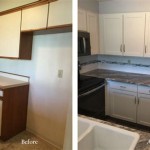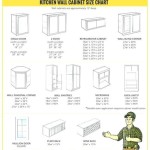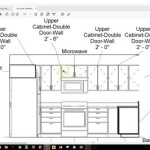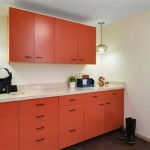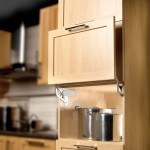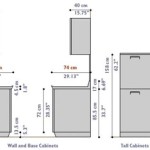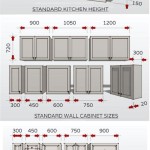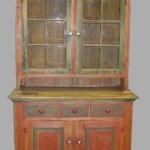Cabinet Materials List: A Comprehensive Guide
The selection of appropriate materials is paramount in the construction of durable, aesthetically pleasing, and functional cabinets. The materials chosen dictate not only the cabinet's visual appeal but also its longevity, resistance to moisture, and overall structural integrity. A thorough understanding of the available cabinet materials, their properties, and typical applications is essential for both professional cabinet makers and individuals undertaking DIY projects. This article provides a comprehensive overview of common cabinet materials, outlining their characteristics, advantages, and disadvantages.
Solid Wood: Timeless Appeal and Enduring Strength
Solid wood remains a popular choice for cabinet construction due to its natural beauty, inherent strength, and workability. It offers a wide range of grain patterns, colors, and textures, allowing for extensive customization to suit various design aesthetics. Solid wood cabinets are typically more expensive than those made from manufactured wood products; however, their durability and potential for refinishing and repair contribute to their long-term value.
Different types of solid wood possess varying characteristics that make them suitable for specific applications within cabinet construction. Hardwoods, such as maple, oak, cherry, and walnut, are known for their density, resistance to dents and scratches, and overall robustness. These woods are commonly used for cabinet doors, frames, and drawer fronts, where durability and aesthetic appeal are prioritized. Softwoods, such as pine and fir, are less expensive and easier to work with but are more susceptible to damage. They are often used for cabinet boxes and interior components where appearance is less critical.
The selection of specific solid wood species should be based on considerations such as the desired appearance, budget constraints, and the anticipated level of wear and tear. For instance, maple, known for its smooth grain and light color, provides a clean and contemporary look. Oak, with its prominent grain pattern, offers a more traditional and rustic aesthetic. Cherry, with its rich reddish-brown hue, imparts a sense of elegance and sophistication. Walnut, known for its dark color and distinctive grain, is a premium choice that adds a touch of luxury.
Properly seasoned and kiln-dried solid wood is crucial for minimizing warping, cracking, and shrinking. The moisture content of the wood should be carefully controlled to ensure dimensional stability during installation and throughout the cabinet's lifespan. Additionally, solid wood cabinets require regular maintenance, including cleaning and polishing, to preserve their beauty and protect them from moisture and scratches.
Plywood: Versatility and Structural Stability
Plywood is an engineered wood product comprised of multiple layers of thin wood veneers (plies) that are bonded together with adhesive under high pressure. The grain direction of each layer is oriented perpendicular to the adjacent layers, which provides exceptional strength and stability. This cross-graining technique minimizes warping, cracking, and shrinking, making plywood an excellent choice for cabinet boxes, shelves, and drawer boxes.
Plywood is available in a variety of thicknesses, grades, and wood species, each offering different levels of strength, durability, and aesthetic appeal. Hardwood plywood, faced with hardwood veneers such as maple, oak, or birch, offers a combination of structural stability and attractive appearance. Softwood plywood, faced with softwood veneers such as pine or fir, is a more economical option that is suitable for less visible cabinet components. The grade of plywood refers to the quality and appearance of the face veneer, with higher grades exhibiting fewer knots, voids, and imperfections.
One of the key advantages of plywood is its dimensional stability, which makes it less susceptible to changes in humidity and temperature compared to solid wood. This is particularly important in kitchens and bathrooms, where moisture levels can fluctuate significantly. Plywood is also more resistant to splitting and cracking than solid wood, making it a durable and reliable material for cabinet construction. Furthermore, plywood is generally less expensive than solid wood, making it a cost-effective option for large-scale cabinet projects.
When using plywood, it is important to seal the edges to prevent moisture absorption and improve the overall appearance. Edge banding, which is typically made of wood veneer or PVC, can be applied to the exposed edges of plywood to create a seamless and professional finish. Additionally, plywood should be properly fastened with screws or nails to ensure a secure and stable assembly.
Particleboard and MDF: Cost-Effective Alternatives
Particleboard and MDF (Medium Density Fiberboard) are engineered wood products made from wood particles or fibers that are bonded together with adhesive under pressure. These materials are less expensive than solid wood and plywood, making them popular choices for budget-conscious cabinet projects. While they offer certain advantages, they also have limitations that should be considered before selection.
Particleboard is made from relatively large wood particles that are compressed and bonded together. It is less dense and less strong than MDF, and it is more susceptible to moisture damage. Particleboard is typically used for cabinet boxes, shelves, and other non-structural components in low-cost cabinets. It is often covered with a laminate or veneer to improve its appearance and protect it from moisture.
MDF, on the other hand, is made from finely ground wood fibers that are bonded together. It is denser and stronger than particleboard, and it has a smoother surface. MDF is often used for cabinet doors, drawer fronts, and other decorative components where a smooth, paintable surface is required. It is less susceptible to warping and cracking than solid wood, making it a good choice for painted cabinets.
Both particleboard and MDF are highly susceptible to water damage. They can swell and disintegrate if exposed to moisture, making them unsuitable for use in areas that are prone to leaks or spills. It is crucial to ensure that these materials are properly sealed and protected from moisture to prevent damage. Additionally, particleboard and MDF are heavier than solid wood and plywood, which can make them more difficult to work with.
While particleboard and MDF are cost-effective alternatives to solid wood and plywood, their limitations should be carefully considered before making a selection. They are best suited for applications where cost is a primary concern and moisture exposure is minimal.
Laminates and Thermofoils: Durable and Versatile Finishes
Laminates and thermofoils are surface materials that are applied to cabinet substrates, such as particleboard or MDF, to create durable and aesthetically pleasing finishes. These materials offer a wide range of colors, patterns, and textures, allowing for extensive design customization. They are also relatively easy to clean and maintain, making them popular choices for kitchen and bathroom cabinets.
Laminates are thin sheets of decorative paper that are bonded to a substrate under high pressure and heat. They are available in a wide variety of colors, patterns, and textures, including wood grain, solid colors, and abstract designs. Laminates are resistant to scratches, stains, and moisture, making them a durable and practical choice for cabinet surfaces. They are commonly used for cabinet doors, drawer fronts, and countertops.
Thermofoils are thin sheets of vinyl that are heated and vacuum-pressed onto a substrate. They provide a seamless, three-dimensional finish that wraps around the edges of the cabinet component. Thermofoils are available in a variety of colors and textures, including wood grain and solid colors. They are resistant to moisture and stains, but they are more susceptible to heat damage than laminates. They are commonly used for cabinet doors and drawer fronts.
One of the key advantages of laminates and thermofoils is their durability. They are resistant to scratches, stains, and moisture, making them a practical choice for high-traffic areas. They are also relatively easy to clean and maintain, requiring only a damp cloth to wipe away spills and dirt. Furthermore, laminates and thermofoils are available in a wide range of colors, patterns, and textures, allowing for extensive design customization.
When selecting laminates and thermofoils, it is important to consider the quality of the material and the substrate to which it is applied. Lower-quality laminates and thermofoils may be more susceptible to peeling, cracking, and fading. Additionally, the substrate should be properly prepared to ensure a strong and durable bond. A reputable manufacturer can provide guidance on the selection of appropriate laminates and thermofoils for specific applications.
Hardware: Functionality and Aesthetics
Cabinet hardware, including hinges, drawer slides, pulls, and knobs, plays a crucial role in both the functionality and aesthetics of cabinets. The selection of appropriate hardware is essential for ensuring smooth operation, durability, and visual appeal. High-quality hardware can significantly enhance the overall performance and longevity of cabinets.
Hinges are responsible for connecting cabinet doors to the cabinet frame. They should be strong and durable enough to support the weight of the door and withstand frequent opening and closing. Different types of hinges are available, including concealed hinges, which are hidden from view when the door is closed, and surface-mounted hinges, which are visible on the exterior of the cabinet. The selection of appropriate hinges depends on the style of the cabinet and the desired level of functionality.
Drawer slides enable drawers to open and close smoothly. They are available in a variety of styles, including side-mounted slides, under-mounted slides, and center-mounted slides. Side-mounted slides are the most common type and offer good stability and load-bearing capacity. Under-mounted slides provide a cleaner look and often feature soft-close mechanisms. The selection of appropriate drawer slides depends on the size and weight of the drawer and the desired level of functionality.
Pulls and knobs are used to open and close cabinet doors and drawers. They are available in a wide range of styles, materials, and finishes, allowing for extensive design customization. The selection of appropriate pulls and knobs should be based on the overall style of the cabinet and the user's personal preferences. They should be comfortable to grip and easy to operate.
The quality of cabinet hardware is crucial for ensuring long-term performance and durability. High-quality hardware is typically made of solid metal, such as brass, stainless steel, or zinc alloy. It is also subjected to strict quality control measures to ensure smooth operation and resistance to corrosion and wear. Investing in high-quality hardware can significantly extend the lifespan of cabinets and enhance their overall functionality and appearance.

Cabinet Parts And Profiles

11 Types Of Cabinet Materials From Mdf To Stainless Steel

Cabinet Design Selection Sheet Home Building Template Materials List New Construction Estimating Bid Designer

7 Best Kitchen Cabinet Materials To Protect You From Poor Quality Horrors

Cutting List For Kitchen Cabinets Materials Sketchlist3d

Cabinet Design Selection Sheet Home Building Template Materials List New Construction Estimating Bid Designer Norway

Portable Tool Cabinet Material List Woodworking Blog S Plans How To

How To Choose The Right Kitchen Cabinet Materials For Your Project Architizer Journal

Cutting List For Kitchen Cabinets Materials Sketchlist3d

Storage Cabinet Plans
Related Posts

